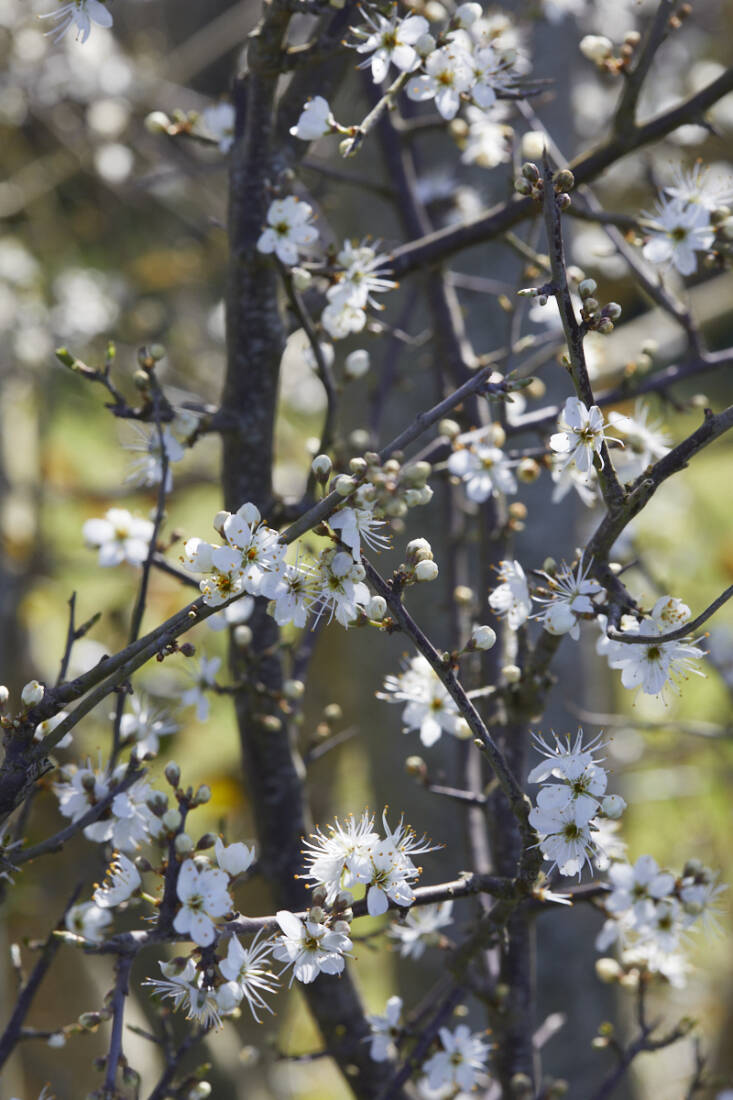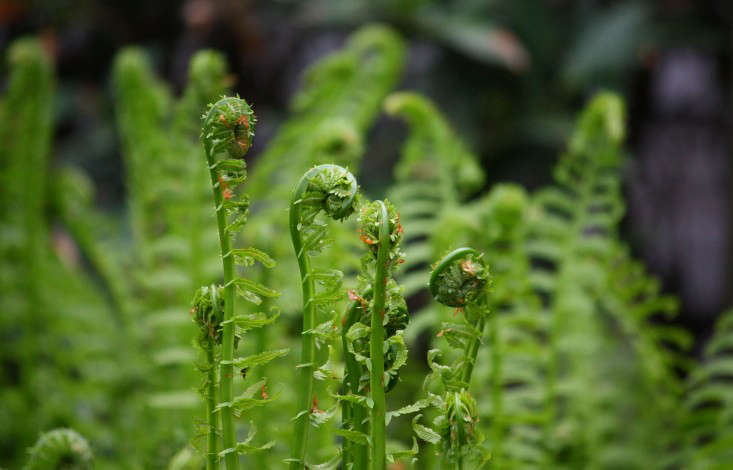Blackthorn: Prunus spinosa
A joyous aspect to spring in the British Isles is hedge-watching, particularly when the first white inflorescence erupts out of a mass of dark twigs. The most dramatic of these is blackthorn, joining demure cherry plum and holding their own before the slow greening of a mixed native hedge that might include beech and field maple as well as further blossom, particularly from hawthorn in May. Grown together, competing with one another, cut back once a year or lashed and woven into laid hedging every fifty years or so, this management system endures, and makes a very successful impenetrable barrier. More attractive than security lighting, Prunus spinosa is the sharpest hedge blossom—not to mention noisiest, thanks to the bees swarming it on the first sunny day.
Photography by Britt Willoughby Dyer, for Gardenista.

Prunus spinosa, the species name of this spiky plum of the hedgerows is well named. The Prunus genus includes plums, cherries, peaches and almonds, and it is part of the greater Rosaceae family, with its telltale petals and anthers.

With an appearance of tasty little plums, sloe berries are unpalatable until they develop a dusty bloom on their thin skins and an early first frost begins to break down the astringency. At which point they are harvested and further macerated in gin or vodka and put aside for several months. The resulting liqueur is ruby red.

Blackthorn in winter, as the name implies, makes a dark silhouette with long, gothic spines. It is generally agreed among fairy tale scholars that this was the source of thorns in Sleeping Beauty, locking limbs with a common but supercharged bramble. In spring however, the thorns reveal themselves to be incubators of blossom: bright white and covered with early bees looking for a break.

Cheat Sheet
• A multitude of flowers appear in early spring before the leaves, or any other signs of greenery.
• Sloe berries, with a dusty bloom on the skin, are best left in situ until after the first frost, when the taste sweetens.
• Thorns of Prunus spinosa are long and sharp but are easily disguised behind flowers and leaves; handle with care or not at all.

Keep It Alive
• Blackthorn is best managed as part of a mixed hedge, with a slow progression of blossom. This might include wild pear, cherry, crab apple, guelder rose, and hawthorn.
• Suitable for the wilder boundaries of a property (or under a fence to deter climbers), it needs no care except for an annual cut back, with very stout gloves.
• Blackthorn is native to Europe and its survival tactics can be too successful elsewhere. Check for invasiveness in American states.

See also:












Have a Question or Comment About This Post?
Join the conversation (0)